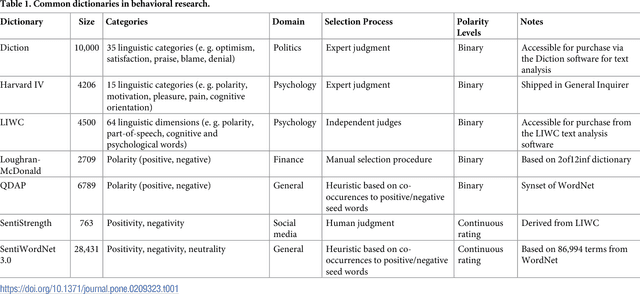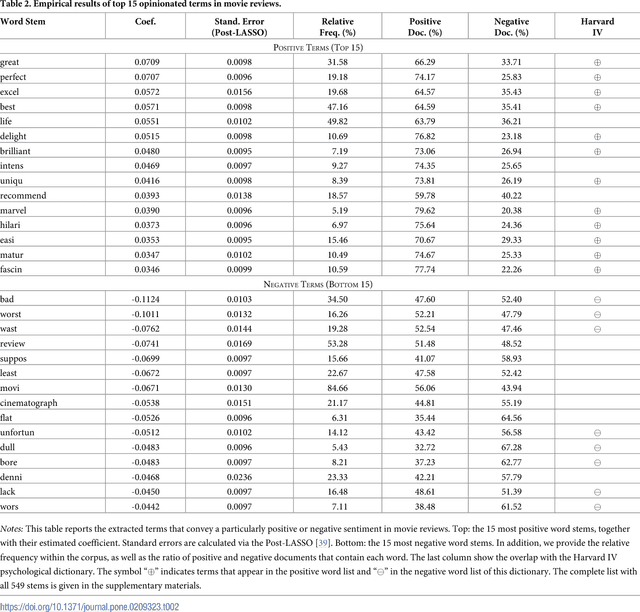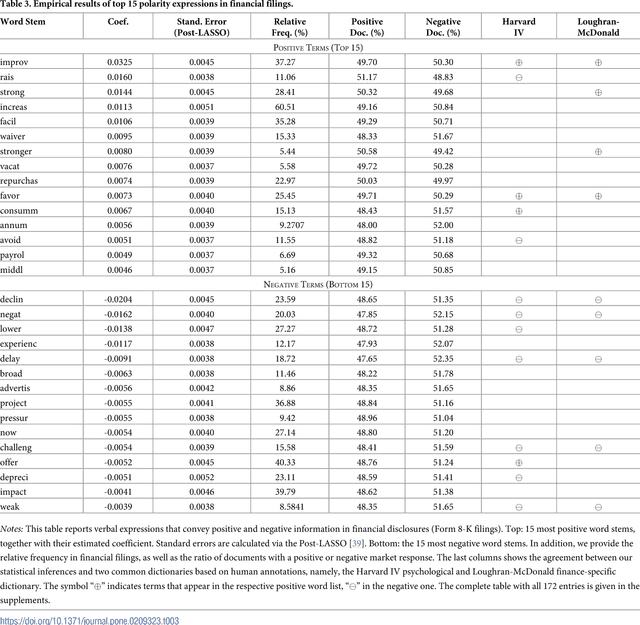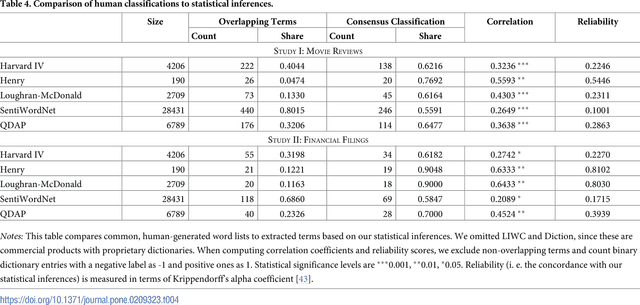Statistical Inferences for Polarity Identification in Natural Language
Paper and Code
Apr 05, 2018



Information forms the basis for all human behavior, including the ubiquitous decision-making that people constantly perform in their every day lives. It is thus the mission of researchers to understand how humans process information to reach decisions. In order to facilitate this task, this work proposes a novel method of studying the reception of granular expressions in natural language. The approach utilizes LASSO regularization as a statistical tool to extract decisive words from textual content and draw statistical inferences based on the correspondence between the occurrences of words and an exogenous response variable. Accordingly, the method immediately suggests significant implications for social sciences and Information Systems research: everyone can now identify text segments and word choices that are statistically relevant to authors or readers and, based on this knowledge, test hypotheses from behavioral research. We demonstrate the contribution of our method by examining how authors communicate subjective information through narrative materials. This allows us to answer the question of which words to choose when communicating negative information. On the other hand, we show that investors trade not only upon facts in financial disclosures but are distracted by filler words and non-informative language. Practitioners - for example those in the fields of investor communications or marketing - can exploit our insights to enhance their writings based on the true perception of word choice.
 Add to Chrome
Add to Chrome Add to Firefox
Add to Firefox Add to Edge
Add to Edge